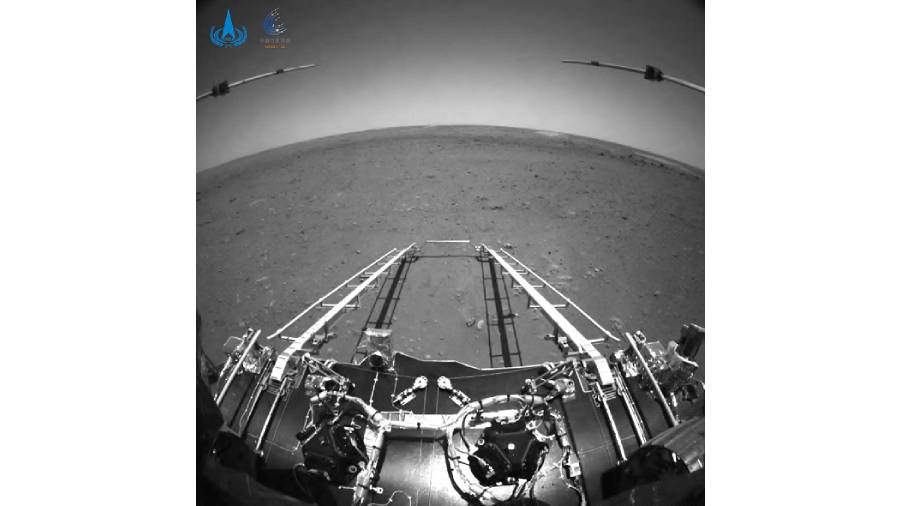A remote-controlled Chinese motorised rover drove down the ramp of its landing capsule on Saturday and onto the surface of Mars, making China the first nation to orbit, land and deploy a land vehicle on its inaugural mission to the Red Planet.
Zhurong, named after a mythical Chinese god of fire, drove down to the surface of Mars at 10.40am Beijing time (0240 GMT), according to the rover’s official Chinese social media account.
China this month joined the US as the only nations to deploy land vehicles on Mars. The former Soviet Union landed a craft in 1971, but it lost communication seconds later.
The 240-kg (530-pound) Zhurong, which has six scientific instruments including a high-resolution topography camera, will study the planet’s surface soil and atmosphere.
Powered by solar energy, Zhurong will also look for signs of ancient life, including any sub-surface water and ice, using a ground-penetrating radar during its 90-day exploration of the Martian surface.
Zhurong will move and stop in slow intervals, with each interval estimated to be just 10 metres (33 feet) over three days, according to the official China Space News.
“The slow progress of the rover was due to the limited understanding of the Martian environment, so a relatively conservative working mode was specially designed,” Jia Yang, an engineer involved in the mission, told China Space News.
Jia said he would not rule out a faster pace in the later stage of the rover’s mission, depending on its operational state at the time.
Jia said the rover was designed to be highly autonomous because the distance to Mars, at 320 million km (200 million miles), means a signal takes 40 minutes to travel both ways, posing a hurdle for real-time control of the rover.
Martian temperatures are also a problem, he said: a night time drop to minus 130 degrees Celsius (minus 200 degrees Fahrenheit) freezes carbon dioxide, covering the uneven ground with a layer of dry ice — a terrain risk for the rover.
Zhurong has an automated suspension system that can lift and lower its chassis by 60cm (2 feet), the only rover with such a capability, according to China Space News.
The rover is covered by nano-aerogel plates to protect its body from the cold.
Dust storms could also affect the rover’s ability to generate power through its solar panels, Jia said.
To overcome this, the panel surface is made with a material that cannot be easily stained by dust and can easily shake dust off by vibration, he said.
China’s uncrewed Tianwen-1 spacecraft blasted off from the southern Chinese island of Hainan in July last year. After more than six months in transit, Tianwen-1 reached the Red Planet in February where it had been in orbit since.
On May 15, the landing capsule carrying the rover separated from Tianwen-1 and touched down on a vast plain known as Utopia Planitia, believed to be the site of an ancient ocean.











